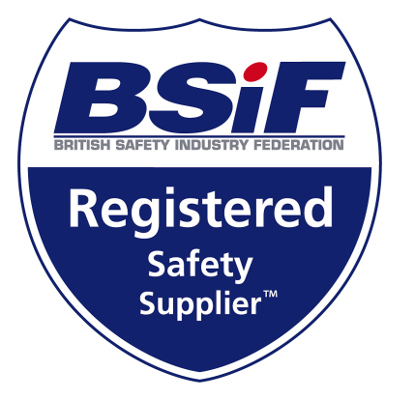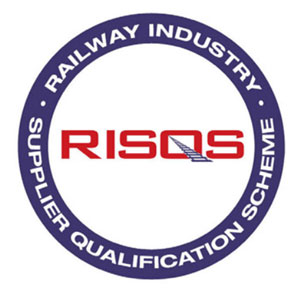The task in hand
Hands are one of the most vulnerable parts of a construction worker’s body, so providing them with the best protection is vital to maintain productivity and minimise working days lost. Anthony Ralph, our Group Technical Manager, offers some simple steps to follow when choosing gloves.
Despite technological advances, the construction industry still relies heavily on moving, handling, cutting, sawing and fixing materials by hand. Along with a cocktail of hazardous chemicals, from solvents to wet cement, it is no wonder that injuries to hands are some of the most common on site.
The Health and Safety Executive’s Health and safety statistics for the construction sector in Great Britain 2017 report found that a fifth of all non-fatal injuries in construction were caused by handling, lifting and carrying; 7% were caused by moving machinery.
With 400,000 days lost to the sector each year through all non-fatal injuries, at a total cost of around £0.5bn, it is fair to say that hand protection is a key issue for not only construction but the whole economy.
A recent case serves as a warning of the dangers. In February 2018, Mercury Specialist Frames was fined £10,000 plus costs after one of its employees had his fingers and part of his palm severed by a chop saw, when it fell onto his hand. An HSE found the company “failed to provide sufficient information and instruction, and there were no risk assessments or safe systems of work in place”.
According to a joint Health and Safety Executive (HSE) and European Union Occupational Safety and Health Agency survey in 2014, the most common risks in construction environments are machines or tools (80%); lifting and moving (75%) and chemical and biological (63%).
While these risks can be reduced through safer working practices and processes, they can never be entirely eliminated, so choosing the most appropriate hand protection is crucial. Following some simple (and logical) steps can make selection far easier.

-
Be clear about the task to be done and identify the risks
The first, and most obvious step, is to identify the risks: Will hazardous chemicals need to be handled? Will cutting tools and welding equipment be used? These should be considered in the context of other hazards in the working area.
-
Assess how workers will come into contact with hazardous chemicals (ie through splashing or immersion) and for how long
Hazardous chemicals are common on construction sites. Wet cement, for example, can cause caustic burns and dermatitis, as the powder becomes highly alkaline when mixed with water. Will workers’ hands be immersed in chemical mixtures or is the risk purely from splashing?
-
Choose the minimum level of chemical protection required
EN ISO 374-1: 2016 is the European standard for chemical protective gloves. Gloves are rated according to the type of chemicals being handled, their penetration resistance (ie if there any holes), the permeation rate (the time it takes for a chemical to break through the material) and material degradation.
Gloves are tested against 18 substances and are grouped into three categories: Type A gloves (offering the highest levels of protection) have a breakthrough time of 30 minutes for at least six chemicals on the list; Type B offer 30 minutes against at least three chemicals and Type C 10 minutes against at least one.
-
Consider dexterity when assessing the risks from cutting and abrasive work
Cutting wood or metal with a chop saw, cutting concrete, stone, brick and paving with a power saw or chasing out a wall for new electrical cabling can all lead to lacerations, cuts and punctures, loss of fingers, broken bones and long-term nerve damage.
All gloves reduce dexterity to a degree, however advanced the materials used to make them, so it is important gloves give the wearer enough dexterity (allowing small and delicate components to be picked up and handled, for example), while being thick enough to protect against cuts and abrasions. This can prevent workers removing gloves to do something and not putting them back on – which is when 70% of injuries occur.
It is also worth remembering that different tasks require different levels of protection, in the same working environment – whether in a manufacturing facility or on site.
For example, when Fareham-based air conditioning equipment GEA Searle identified hand injuries as a key area of improvement, its health and safety team worked with manufacturer TraffiGlove to identify the level of risk in every task being carried out in the facility. A range of gloves was chosen, matched to each activity, helping to reduce accidents by 70%. -
Choose the minimum level of cut protection required
EN 388:2016 is the European Standard for cut protection in gloves. The ‘Coup blade cut test’ is used to rate the performance of glove material, with a circular blade moving back and forth until it breaks through. Abrasion, cut, tear and puncture resistance is given a value between one and five, with five being the highest.
High-performance materials in gloves, such as steel and fibreglass, give greater levels of protection but can blunt the blade in the EN 388 test. If this happens, the gloves must also be tested to EN ISO 13997, with a blade being dragged across the material and the force needed to cut through measured. This gives a cut protection level, from A to F, with F being the highest.
-
Thermal protection
Aside from chemical burns, construction workers are also at risk of burns from flames, steam, hot surfaces and liquids, from activities as simple as stripping paint and wallpaper on a small domestic project, to more specialist tasks such as cutting and welding steel reinforcement cages on major construction schemes.
If work is being carried out with flammable materials or in a hot environment, gloves need to be tested to EN 407:2004. There are four levels of protection (one to four, with four being the highest) in six categories, relating to the type of injury: flammability (A), contact heat (B), convective heat (C), radiant heat (D), small splashes of molten metal (E) and large splashes of molten metal (F).
-
Size and comfort
Hand protection, as with all PPE, needs to be comfortable, safe, appropriate for the season and working conditions. If gloves fit well, operatives will be happy to wear them. For example, some people are allergic to rubber latex, so ensure non-latex gloves are chosen, whenever possible.
However comfortable gloves are, hands can become hot, sweaty and uncomfortable. As many injuries occur when gloves are removed, it is important to ensure staff have breaks when they can remove gloves safely.
-
Involve employees in choosing hand protection
A construction site can be a stressful environment and working with staff is essential to ensure they are safe, comfortable and happy. Actively involving operatives in choosing PPE, including gloves, is a good strategy, as it has been shown that people are more likely to wear PPE if they take part in its selection.
For example, in 2014, Siemens Power Generation Services, Power and Gas cut minor hand injuries in its service facility by 47%, by consulting with employees to identify issues and working with manufacturer Polyco to develop a bespoke range of gloves that met their needs.
-
Check suppliers’ and manufacturers’ certification
Check suppliers’ product certification and ask for details on manufacturing processes and quality assurance systems. This is particularly important for gloves offering the highest levels of protection, which are classed as ‘Complex PPE’ under the new PPE Regulation 2016/425, which comes into force on 21 April 2018.
This means they must be examined by a Notified Body (such as UK standards body BSI Group), which will issue an EC Type-Examination Certificate. Category III products also have to be manufactured under a quality management system, to ensure on-going production performance. This must also be assessed annually.
-
Get expert advice from a PPE supplier
Finally, and most importantly, speak to a PPE supplier. There is no one-size-fits-all solution to hand protection but suppliers should be able to provide independent and expert advice on the most appropriate gloves for activities and working conditions.
It is also important to treat the European standards as a minimum requirement. Ask for evidence showing gloves have been tested in similar environments – a reputable company will be happy to share this information and will regularly test the PPE it supplies.
Plus, watch our advice on the best hand protection depending on the job in hand including cold weather, wet conditions and working with chemicals.
Need advice on hand protection? Can we offer you a glove audit? We are happy to advise you on 01293 774 710 or email sales.support@onsite-support.co.uk













